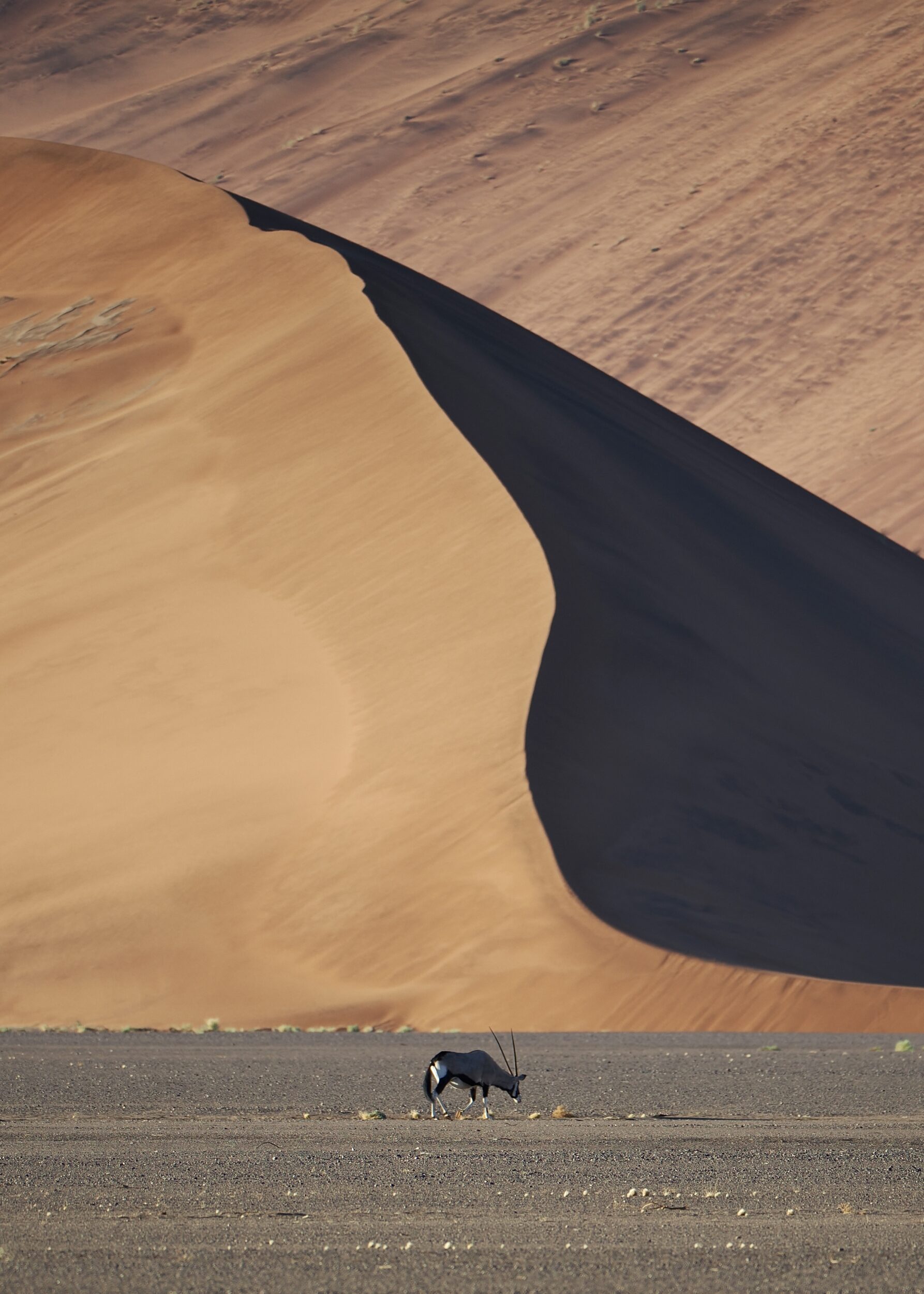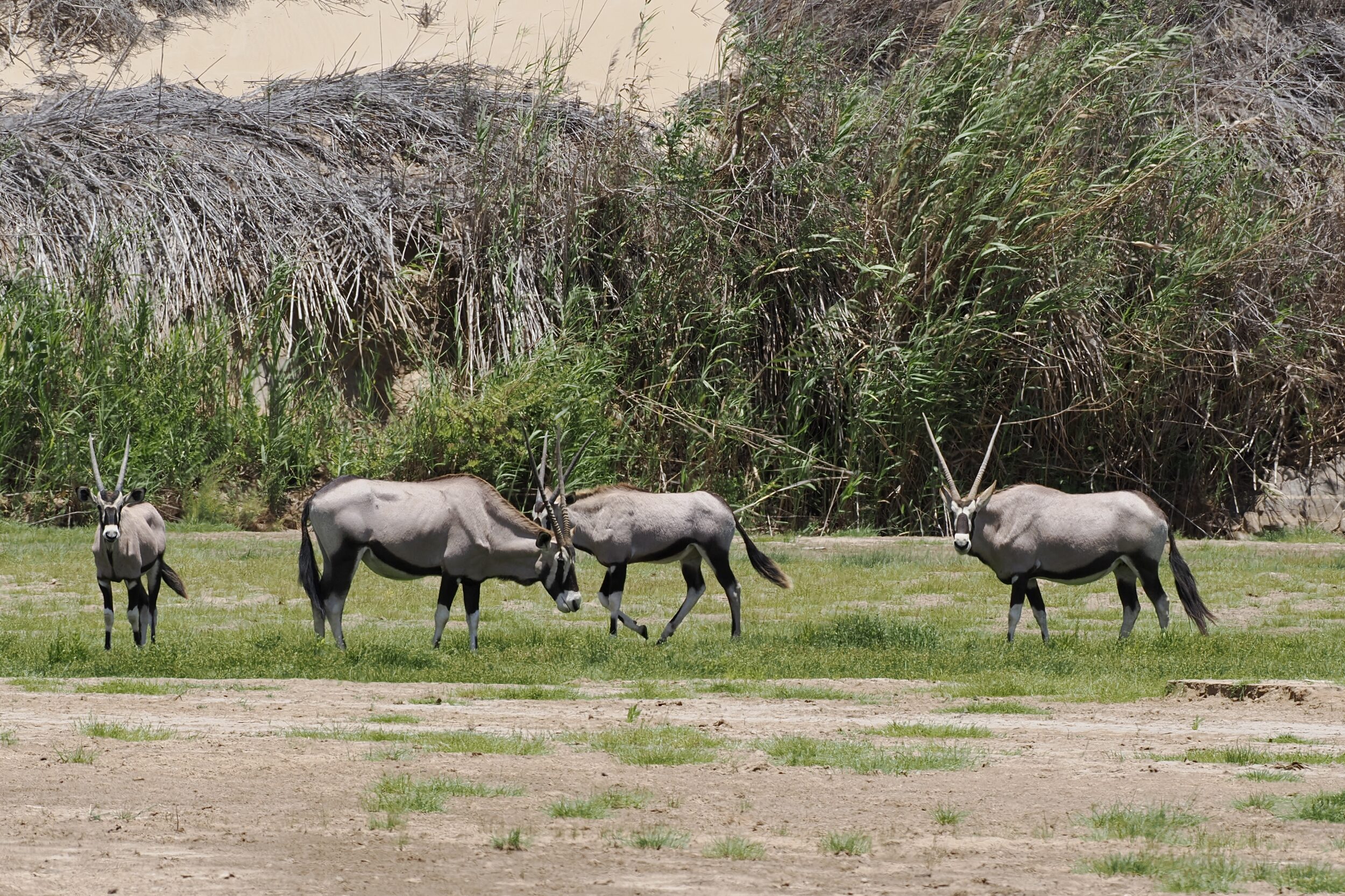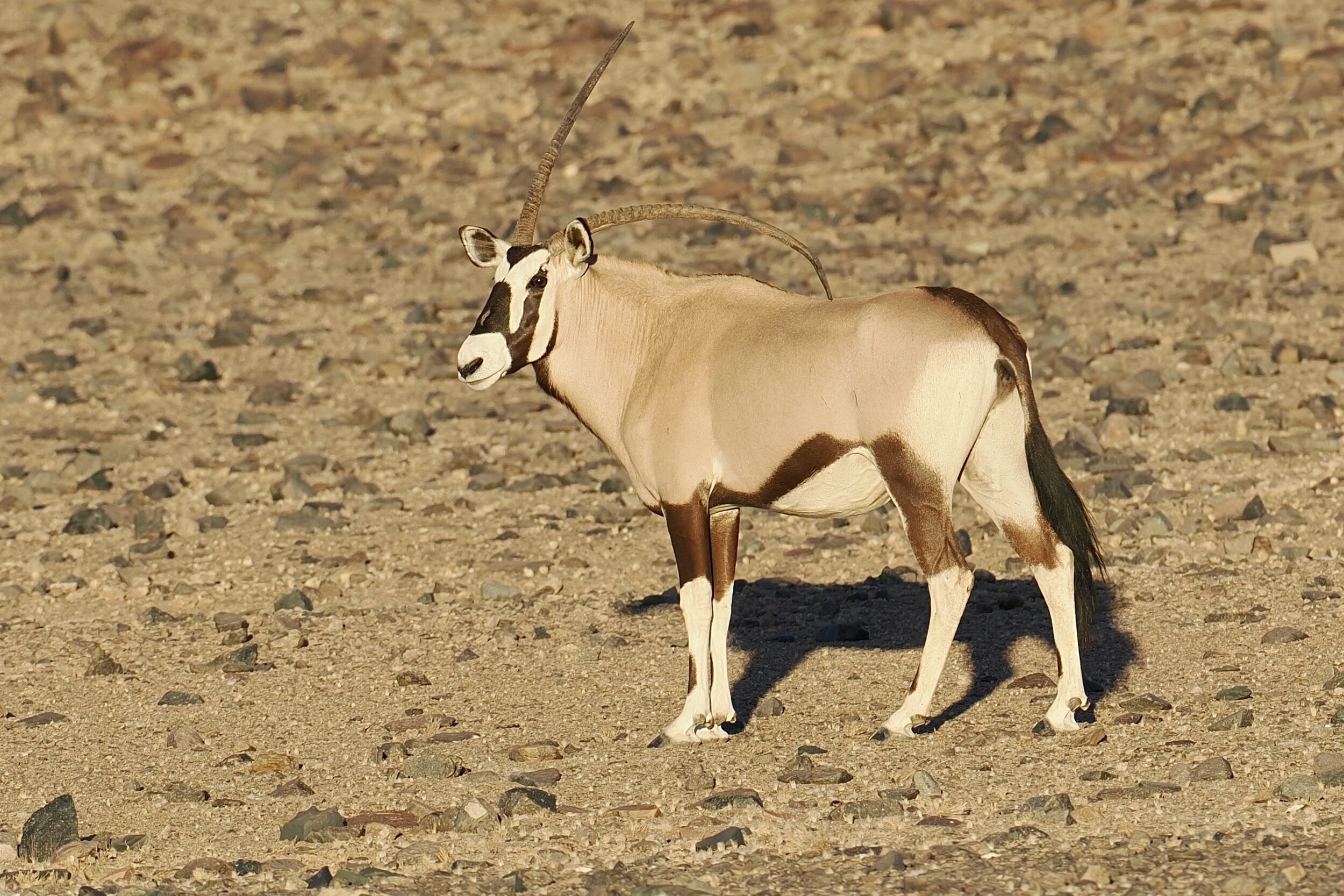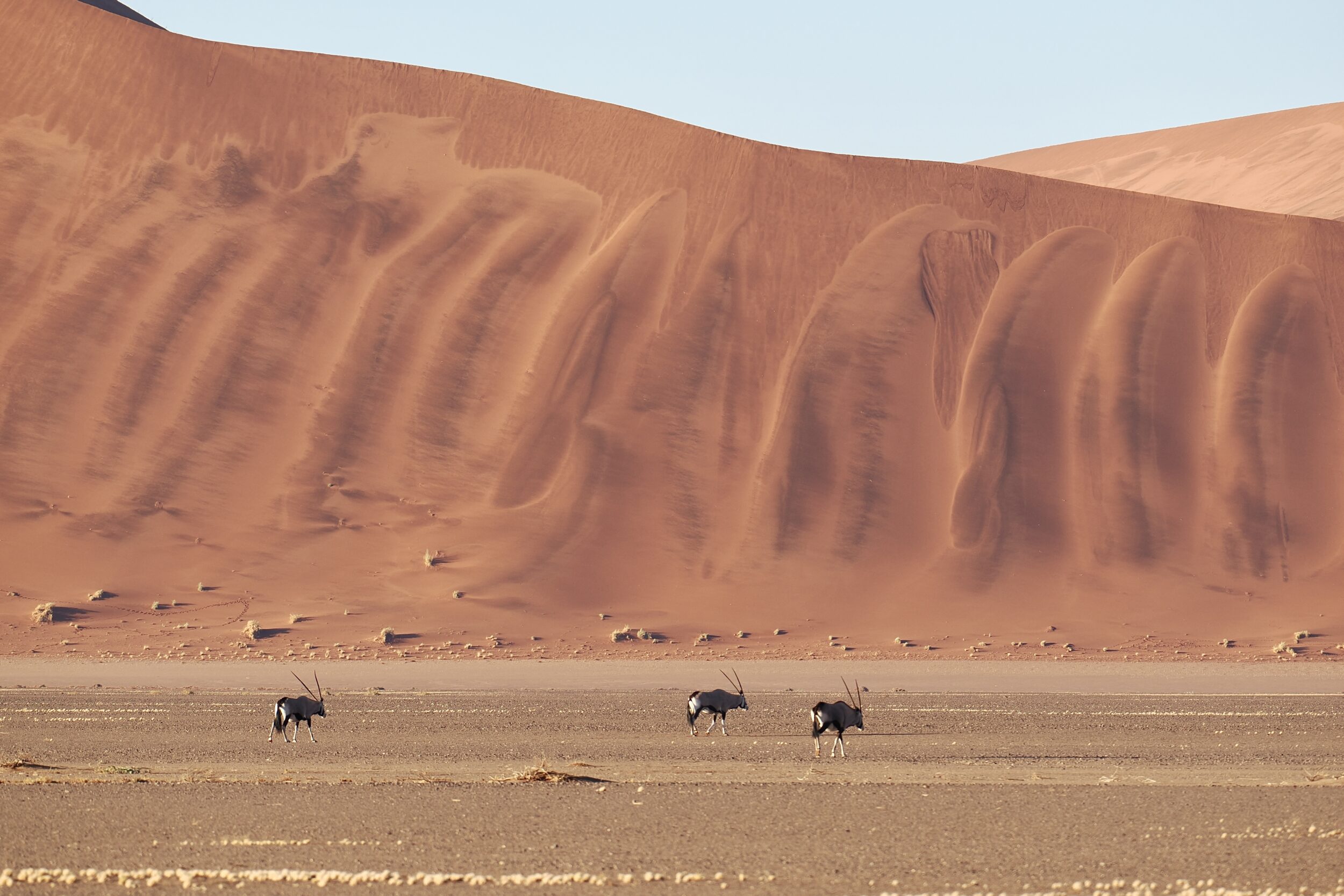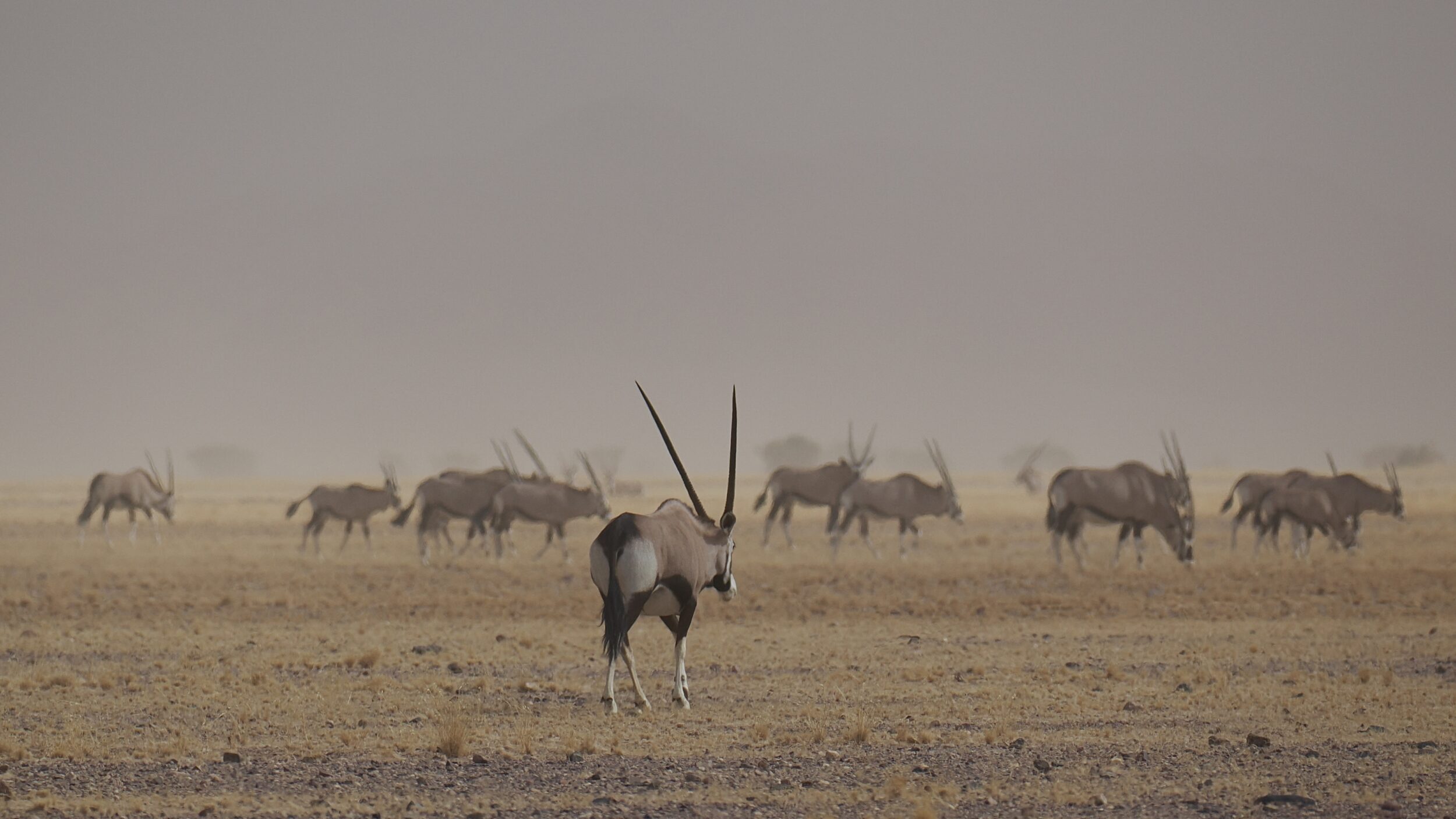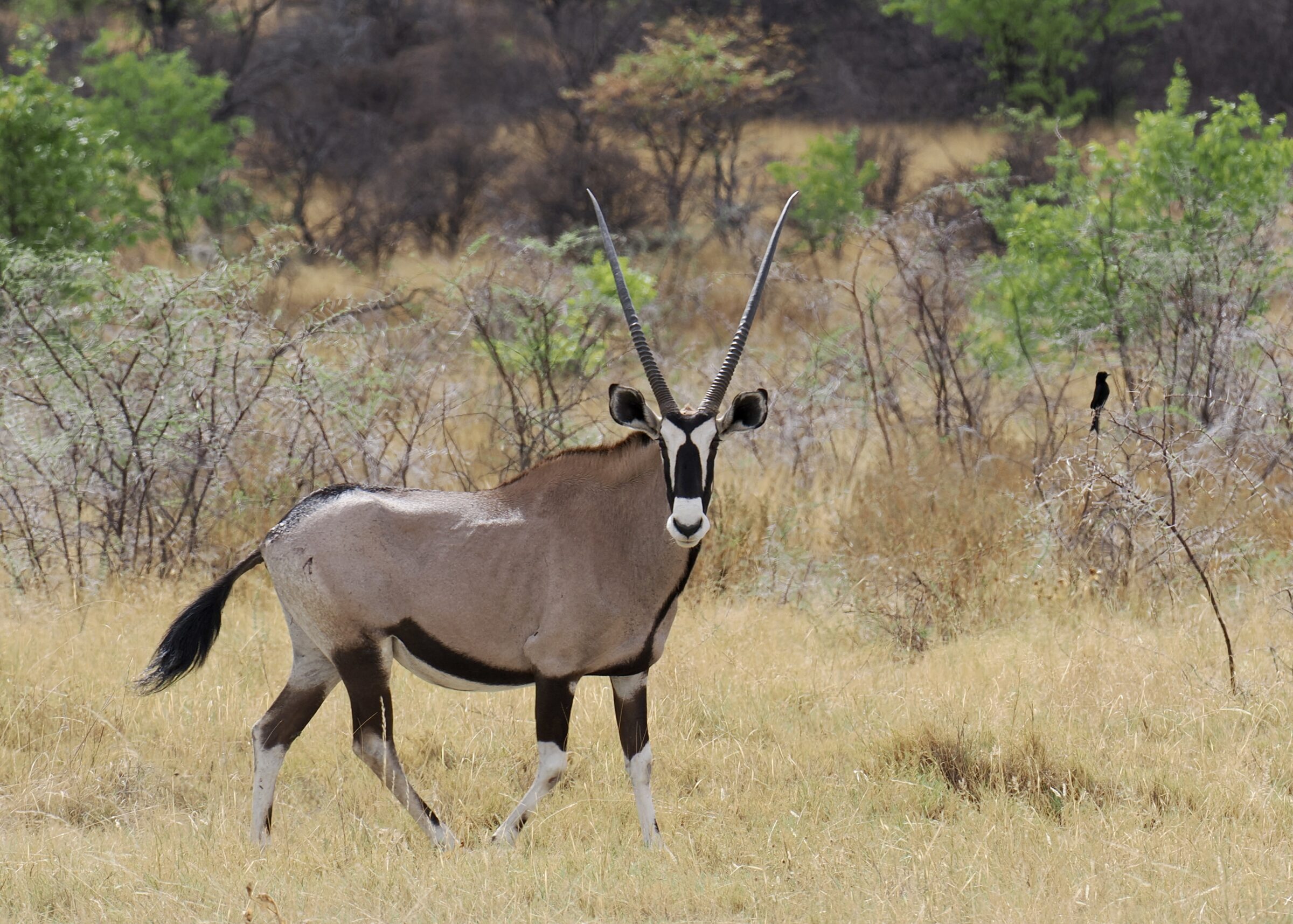Oryx gazella – the gemsbok, aka “African oryx”/ “South African oryx” – is the largest oryx species.
Namibia’s emblematic mammal is prodigiously well-adapted to a very demanding environment.
Gemsbok would probably handsomely defeat the “ship of the desert” in any global championship for “most efficient/ hardiest mammal in sandy places where rain hardly ever falls, and where no “permanent” rivers flow”.
The Namib Desert’s “sand sea” – most especially, around Sossusvlei – has some of “our” planet’s most astonishing landscapes.
More than a few of its dunes dwarf even the largest local inhabitants!
Comments closed